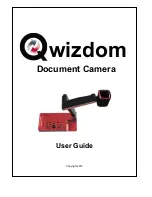
Pike Technical Manual
V5.2.0
181
Description of the data path
How to transfer parameters to the camera
The following 3 variants of transferring the parameters are available with the
firmware 3.x:
In the following you find a short description of each variant:
Encapsulated Update (begin/end)
The
Encapsulated Update (begin/end)
has the following characteristics:
•
Host will set a parameter update begin flag in the camera (UpdActive Field
in Register 0xF1000570, see
Table 180: Advanced register: Update timing
•
Host will send several parameters to the camera and then signalize end by
resetting the flag
•
All parameters will become active for the same next image
•
Dependent on timing mode, the camera
– (standard Update): uses the previous parameters until the update flag
(UpdActive Field in Register 0xF1000570) is reset
– (
Quick Format Change Mode
): Camera stops and waits until the update
flag (UpdActive Field in Register 0xF1000570) is reset.
In the
Encapsulated Update (begin/end)
the exact sequence is:
1.
Parameter update begin (advanced feature register)
2.
Standard IIDC register update (1..N register) (standard feature register)
3.
Parameter update end (advanced feature register)
Transfer mode
Advantage
Disadvantage
Encapsulated Update (begin/
end)
easy to use (standard quad
writes in camera register is
possible)
one write access per register
access
Parameter-List Update
only one write access for all
parameters
fastest host
camera transfer
(from 5 parameters on faster
than encapsulated mode)
handling of parameter list
easy
not so easy to use (block
writes)
max. 64 entries for parameter
list
Standard Update (IIDC)
compliant with IIDC V1.31
non deterministic change of
parameters
Table 54: Comparison of 3 transfer modes
















































